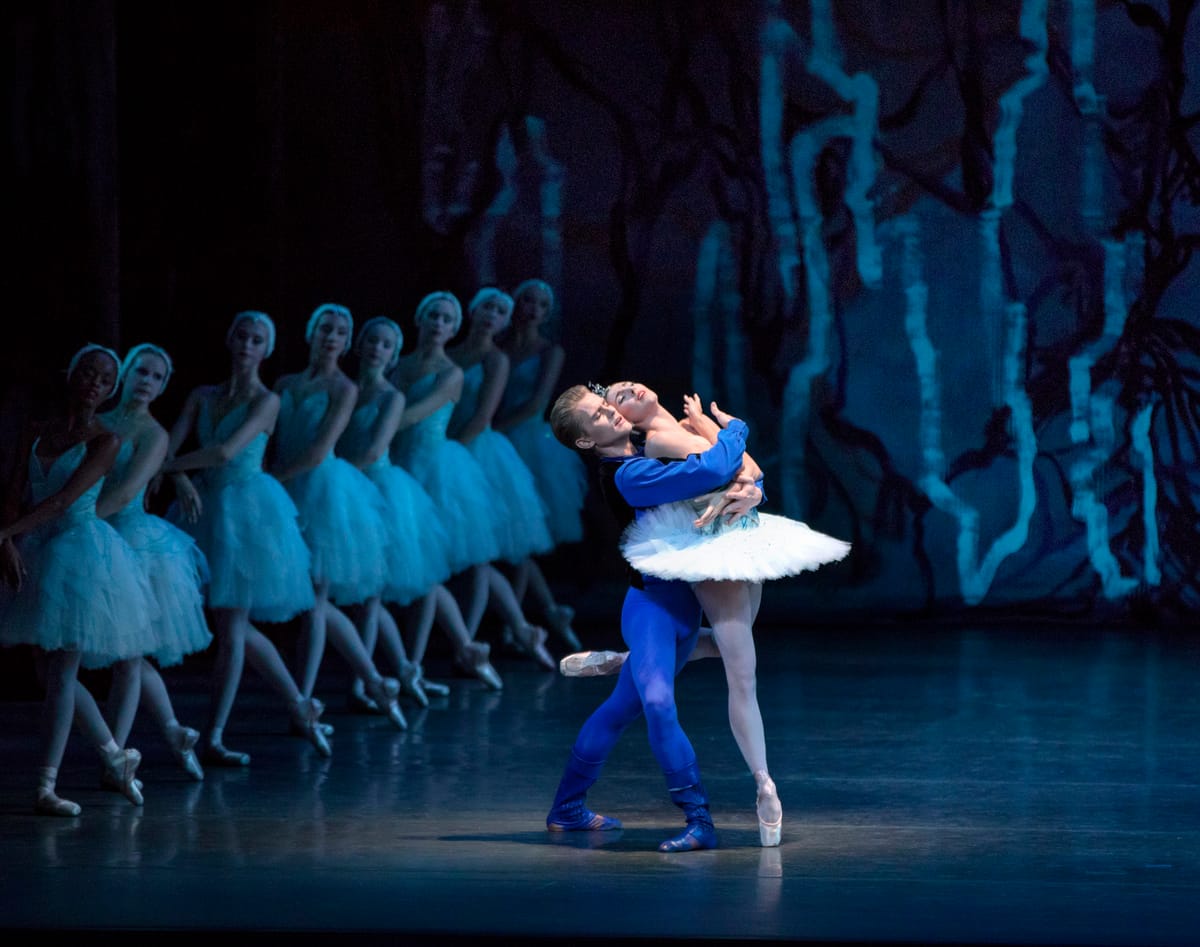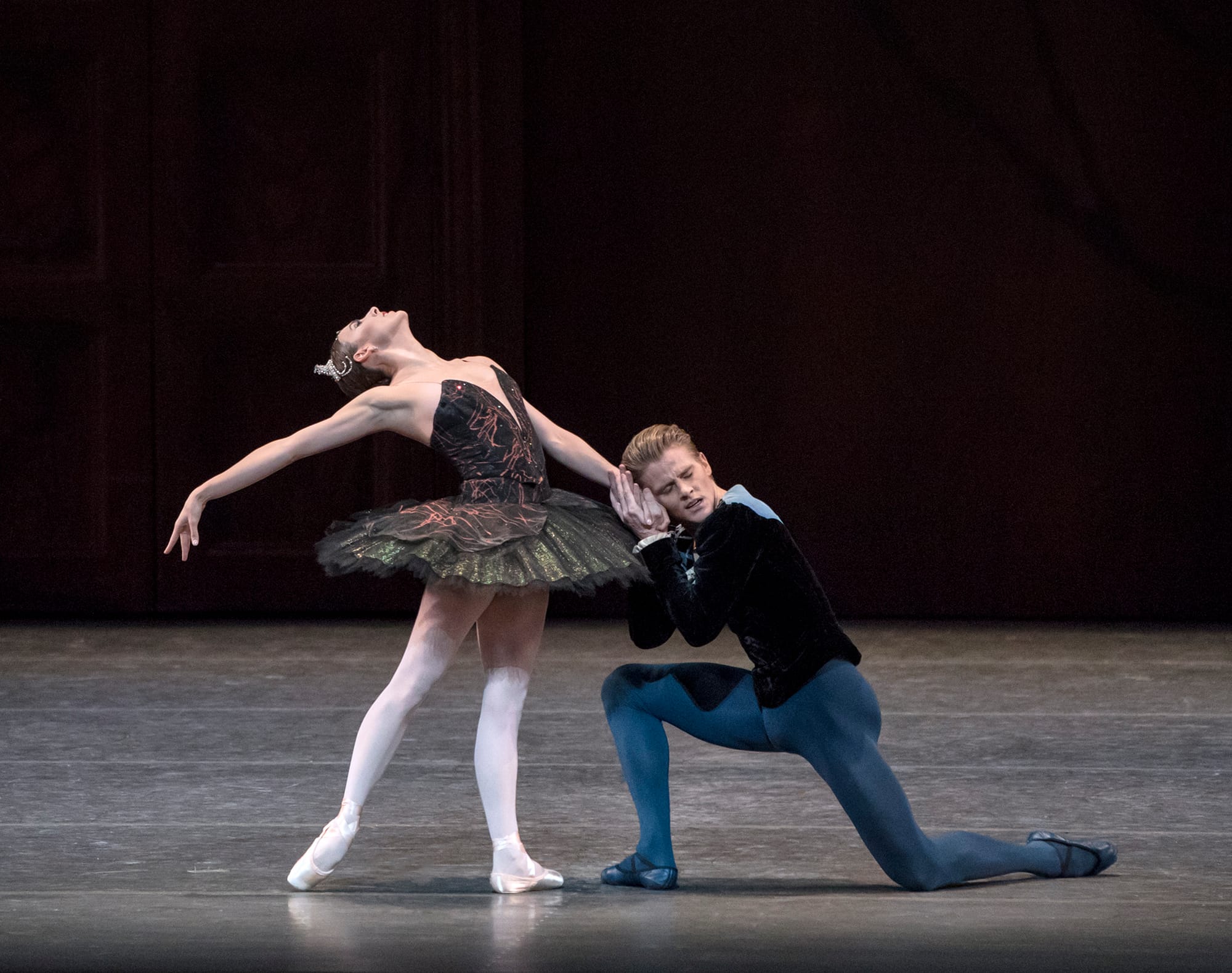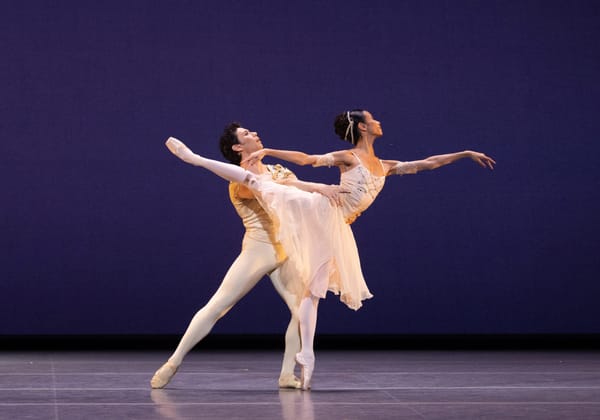The Heart of the Matter

"Swan Lake"
New York City Ballet
Koch Theater
New York, New York
September 27, 2017
Peter Martins' "Swan Lake", for all its problematic moments, does leave the iconic black and white pas de deux reasonably intact, and, since they constitute "Swan Lake's" emotional core, a committed pair can wrest a moving performance from those dreary, blotchy paint drips. Even without Odette's mime to explain the situation (how is Martins' Siegfried to know that foreswearing Odette will doom her?) Tiler Peck and Chase Finlay, in their joint debuts, gave rich, moving, and enthralling performances.
Peck's Odette was self-contained and controlled; the demented flapping that substituted for emotion in the production's earlier years has fortunately vanished. She seemed isolated and resigned when she first met Siegfried, a mysterious vision of smooth and creamy legato that no self-respecting Prince could resist. At times, Peck has over-embellished her phrasing, giving her dancing a somewhat hard, polished gleam, but she danced Odette with an unexaggerated confidence in the choreography, seeming to expose her heart and her soul with a radiant and limpid simplicity stretching her line and bending her back into the music but no further. She and Finlay gave the pas de deux a rich emotional arc, as he became more and more enraptured and she more and more trusting; the glorious moment when he wrapped his arms around her, swaying to the plaintive Tchaikovsky music was breathtakingly tender and loving.

Her Odile was equally effective as she again trusted the choreography. She was hard and cold without resorting to melodramatic sneers or extraneous vamping. Not surprisingly, she had no technical issues and the fouettés were fast, furious, and confident, alternating singles and doubles with a flourish. But, even more impressively, they were musically and dramatically focused, whipping up excitement without visiting the circus.
Siegfried in some ways is a more difficult role than Odette/Odile, since he does not have the all the Petipa/Ivanov choreography to propel him and he must rely on stage presence and mime much of the time. Despite the dreary staging and ridiculous costume (solid blue for a melancholy prince makes Siegfried look like he is walking around with a bubble over his head saying "I has a sad.") Finlay was dignified and gracious in the first scene, moving with a stylized yet individualized dignity. His extraneous solo in the lake scene, set to the big swan music, had an easy plush elegance, and his bouncy solo in the black act was beautifully phrased. His face, though, could have been a bit brighter then -- Siegfried doesn't need to grin, but an expression of blind joy makes Odile's trickery more tragic.
His final scene, where Martins has Siegfried fall to the ground in helpless despair, was done without obvious scenery-chewing, though Martins' ending is somewhat of a dramatic sham. Poor Siegfried and Odette have to cling to each other watching the corps mill around practicing their arabesques while von Rotbart (no "h") chases them until Tchaikovsky's potent music ends, when Rotbart suddenly seems to realize "Oh my gosh, they are in love", which shocks him to death. Then for no explicable reason (obviously the spell has been broken) Odette turns back into a swan and paddles off with her sisters while Siegfried watches. Surely he could have found a puddle in his decrepit palace to keep her in.
But Martins doesn't really go in for tragedy; the most egregious moment is the low comedy after Siegfried's wrenching discovery of Odile's trickery, when the irritating and ubiquitous jester tiptoes back to the empty throne room to have a nap. Nor does his production has a sense of royal decorum; some of the nobility have to sit on the floor during Siegfried's birthday and the palace has no servants so the guests have to open and close the door for the entertainment. These are minor details, of course, but they undermine the grand and detailed atmosphere that the music paints so gloriously. But nothing could undercut the power and beauty of this Odette and her Siegfried.
Copyright © 2017 by Mary Cargill



